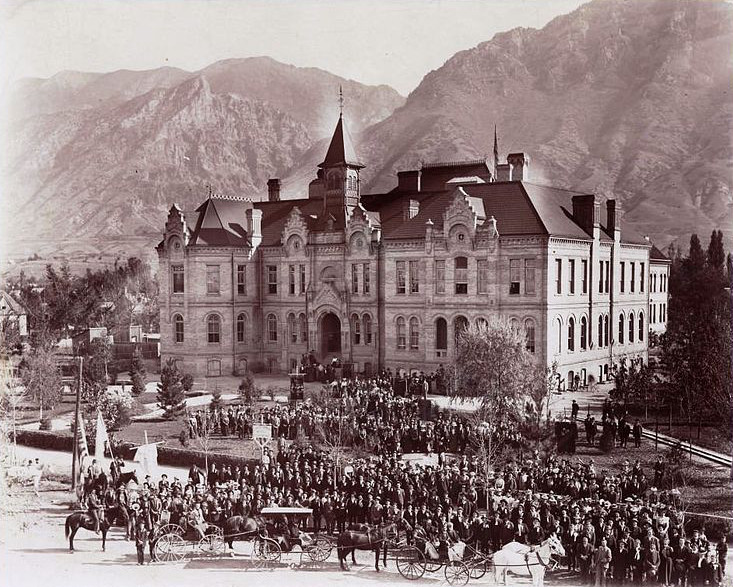Engagement Project 2025
Mental Health Challenges Among LDS Teenagers: Exploring the Impact of Doctrine and Culture
Mental health issues, including eating disorders and other psychological conditions, are prevalent among adolescents across various communities. However, certain cultural and doctrinal frameworks may influence the prevalence and nature of these issues within specific groups. This article examines the mental health challenges faced by teenagers in The Church of Jesus Christ of Latter-day Saints (LDS), focusing on eating disorders and other mental health conditions, and compares these experiences with those in other religious communities. Additionally, it explores how LDS doctrines and teachings may contribute to these challenges.
Research indicates that adolescents in LDS communities experience mental health issues at rates comparable to or higher than their peers in other religious groups. A study highlighted by the BYU Daily Universe found that LDS women report higher rates of depression compared to non-LDS women, with approximately 27% of LDS women indicating they have taken or are currently taking medication for depression. This statistic suggests a significant prevalence of mental health concerns within the LDS community.1 A study conducted on LDS women by Tim Heaton concludes that LDS women are significantly higher in depression than non-LDS women.2
LDS doctrines and teachings emphasize the sacredness of the body, the importance of modesty, and the value of obedience to church standards. While these teachings aim to promote spiritual and physical well-being, they may inadvertently contribute to mental health challenges among teenagers. The emphasis on appearance and modesty can lead to heightened awareness and concern about body image.
Teenagers, particularly females, may feel pressure to conform to specific standards, leading to dissatisfaction with their bodies and potentially contributing to disordered eating behaviors. Additionally, the strong emphasis on obedience and perfection can create a sense of inadequacy among teenagers who struggle with mental health issues, potentially leading to feelings of guilt and shame. In Doctrine and Covenants 89, there are some health guidelines, including a prohibition on tea, coffee, tobacco, grain, and vegetarian diets that are laid down for members of the LDS church to follow.3 While these restrictions are not bad, they are often misapplied to promote rigid food rules and eating disorders, especially in children and adults already predisposed to it. This may also lead to youths and young girls thinking their spiritual worth is tied directly to their food choices. Young girls in the LDS church are often taught that their dietary habits are linked with righteousness.
The LDS church women are often taught to present themselves in certain ways. Having a slim, fit, and toned body, with hair and skin that looks like that of a model. This often sets an unattainable standard for younger girls in the church, putting a strain on the overall mental health of these young women and sometimes men, as they think their spiritual well-being is attached to their physical appearance.
According to an interview with Witney Carson, a popular LDS dancer and model, the LDS church emphasizes the body as a sacred temple where covenants are made with God, and because of this, physical appearance is very important to them. LDS women believe that their beauty standards are connected to what gets them into heaven.4 These unrealistic standards lead to a lot of mental health issues for people who do not fit into the acceptable beauty standard.
Salt Lake City, Utah, which has a large LDS population, is highlighted as having the highest plastic surgeries per capita, even surpassing Los Angeles. Salt Lake has the highest number of beauty treatments per resident, indicating a strong number of women wanting to fit into certain beauty standards. 87 percent of Utah’s population identifies as white, and 57 percent are members of the LDS church. Church members are encouraged to strive for perfection in all things, which also translates to their physical appearance.5
I interviewed a close friend who left the LDS church after she turned 18. My friend was born into the LDS church and attended all through her childhood. Her father is a bishop in the church and holds a respectable title. She remembers getting baptized at 8 for the dead and participating in all LDS children and youth activities. She remembers being a happy child until she started participating in a lot of the activities. In her youth group, most of the girls had blond hair and blue eyes, my friend has brown hair and brown eyes, and she never felt like she fit in with her friends at church. She reports that girls would make subtle comments about her looks and how she did not fit into the beauty standard, and how none of the boys would want her.
My friend started to ask questions, but her parents would quickly shut them down, and she felt like she had no choice but to try to fit in. She started starving herself and eventually got diagnosed with a severe eating disorder. She also started having suicidal ideations due to other experiences and abuse she had faced in the church. She knew that the church was hurting her, and she needed to get out of it, but she knew that would mean losing family and friends, so she stuck with it. My friend was sent to a residential treatment facility to help treat her health disorder, and at the facility, she found that over 50 of the other kids there had some affiliation with the LDS church. This solidified her decision to get out of the church. She made a decision to focus on her health and leave the church behind.
Mental health challenges, including eating disorders, are significant concerns among teenagers in the LDS community. While LDS doctrines and teachings claim to promote spiritual and physical well-being, certain aspects contribute to mental health issues. By acknowledging these challenges and creating supportive environments that address mental health openly and compassionately, the LDS community can better support its youth in navigating these issues.
- Mckenna Park, “Mormon Culture Influences Mental Illness Trends among Members,” BYU Daily Universe, February 5, 2018, https://universe.byu.edu/2018/02/05/mental-illness-1 ↩︎
- Tim B Heaton, Stephen J Bahr, and Cardell K Jacobson, A Statistical Profile of Mormons, 2004. ↩︎
- Joseph Smith, Doctrine and Covenants (Independence, Missouri: Joseph Smith, Jr.’s Rare Reprints, 1990). ↩︎
- Alice Gregory, “Why Mormon Women Are so Prevalent in the Beauty Industry,” Allure, October 11, 2017, https://www.allure.com/story/why-so-many-beauty-bloggers-are-mormon? ↩︎
- Jennifer Alsever, “In Pursuit of Perfection: Inside Utah’s Plastic Surgery Industry,” Utah Business, December 19, 2022, https://www.utahbusiness.com/archive/2022/12/19/in-pursuit-of-perfection/ ↩︎
Bibliography
Alsever, Jennifer. “In Pursuit of Perfection: Inside Utah’s Plastic Surgery Industry.” Utah Business, December 19, 2022. https://www.utahbusiness.com/archive/2022/12/19/in-pursuit-of-perfection/?.
Gregory, Alice. “Why Mormon Women Are so Prevalent in the Beauty Industry.” Allure, October 11, 2017. https://www.allure.com/story/why-so-many-beauty-bloggers-are-mormon?.
Heaton, Tim B, Stephen J Bahr, and Cardell K Jacobson. A Statistical Profile of Mormons, 2004.
Park, Mckenna. “Mormon Culture Influences Mental Illness Trends among Members.” BYU Daily Universe, February 5, 2018. https://universe.byu.edu/2018/02/05/mental-illness-1
Smith, Joseph. Doctrine and Covenants. Independence, Missouri: Joseph Smith, Jr.’s Rare Reprints, 1990.
Featured image courtesy of Keenan Constance via Pexels. Used for educational purposes under fair use.






